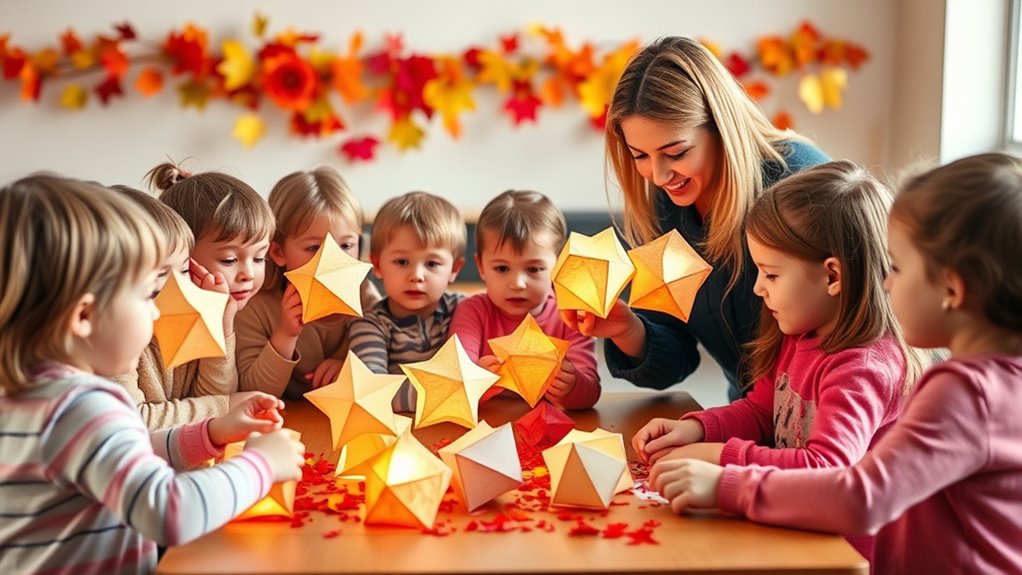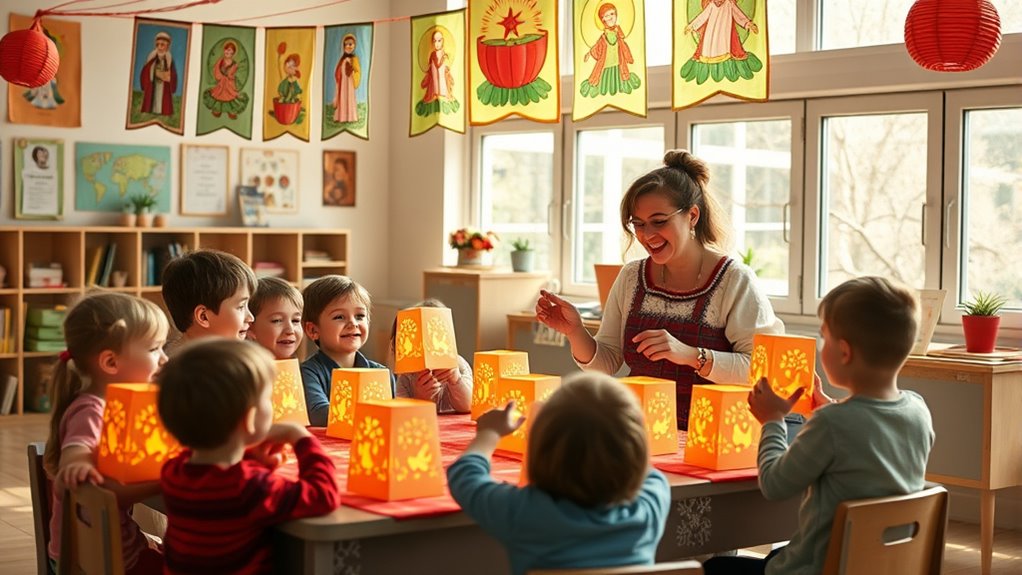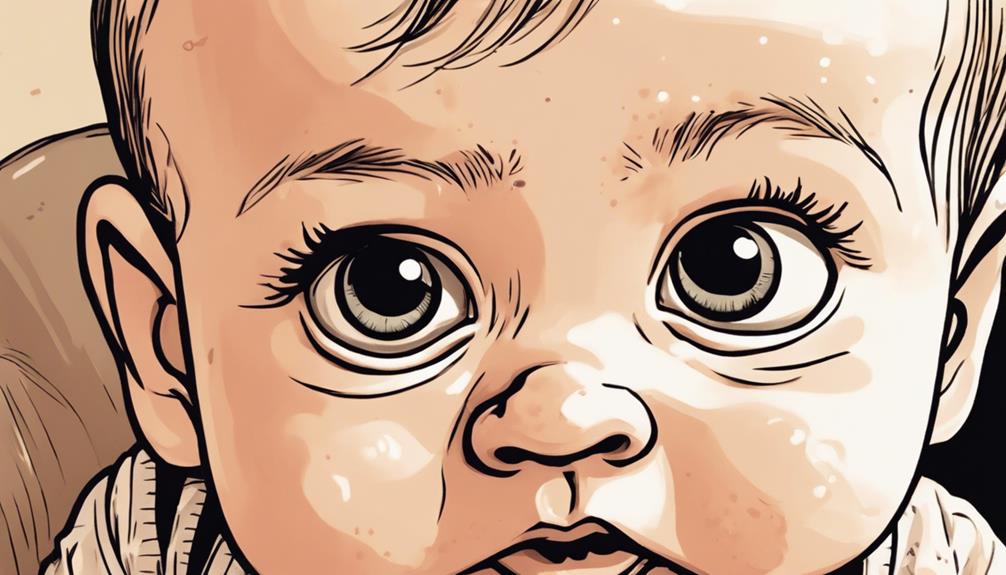To teach kids about St. Martin’s Day traditions, you can organize fun activities like making colorful lanterns from simple materials, telling the legend of St. Martin through stories or puppet shows, and encouraging children to act out scenes. You might also plan a lantern procession to highlight the holiday’s themes of light and kindness. These engaging efforts help kids understand the values behind the celebration, so keep exploring for more ideas.
Key Takeaways
- Use hands-on lantern crafts with vibrant colors to teach children about the tradition of evening processions and light symbolism.
- Narrate the legend of St. Martin engagingly, encouraging questions, story reenactments, and the use of props to deepen understanding.
- Organize community lantern processions where children carry homemade lanterns, emphasizing themes of hope, light, and giving.
- Incorporate moral lessons through crafts like paper coats to illustrate sharing and generosity, reinforcing core values of the holiday.
- Use storytelling activities, songs, and games to make learning about St. Martin’s Day engaging, memorable, and educational for kids.

Are you looking for a meaningful way to introduce your children to St. Martin’s Day traditions? One of the most engaging methods is through hands-on activities like lantern crafts and storytelling activities. These approaches not only entertain but also help kids grasp the significance of the holiday in a fun and memorable way. By involving them in making lanterns, you give them a tangible connection to the tradition of carrying lanterns during evening processions, which symbolize light and kindness. You can gather simple materials such as paper, candles, and markers to create colorful lanterns that reflect your child’s personality. As they craft, explain the story of St. Martin, emphasizing his acts of charity and compassion, which will deepen their understanding of the holiday’s core message. Additionally, incorporating color accuracy in the visual representation of crafts can make the lanterns more vibrant and engaging for children.
Storytelling activities are equally essential. Children love stories, especially when they can participate actively. You can narrate the legend of St. Martin in an engaging way, encouraging your kids to ask questions or re-enact parts of the story. To make it more interactive, incorporate props or puppets, which can bring the characters to life. After sharing the story, invite your children to retell it in their own words or act out scenes, fostering not only comprehension but also empathy. These storytelling sessions can be complemented with songs or poems about St. Martin, creating a festive atmosphere that celebrates the values of sharing and kindness.
To make the day even more special, consider organizing a small procession in your neighborhood or backyard, where children carry their homemade lanterns while listening to stories of St. Martin. This activity mirrors the traditional lantern walks and reinforces the holiday’s themes of light, hope, and giving. You can also incorporate simple games or crafts that highlight the story’s moral, such as making small “coats” from paper to symbolize St. Martin’s act of sharing his cloak. These activities not only entertain but also instill important lessons about generosity and caring for others.
Frequently Asked Questions
How Did St. Martin Become a Symbol of Charity?
St. Martin became a symbol of charity because his legacy highlights selflessness and compassion. You see, he shared his cloak with a beggar, embodying charitable symbolism that inspired others. This act of kindness made him a revered figure, representing generosity and caring for those in need. As a result, his story continues to remind us all of the importance of charity, making him a lasting symbol of altruism and goodwill.
What Are the Origins of the Lantern Processions?
You step into the crisp evening air, holding a glowing lantern as children gather for the procession. The lantern history dates back centuries, symbolizing light overcoming darkness and guiding souls. The procession symbolism represents unity, hope, and the sharing spirit of St. Martin. As you walk together, the flickering lights create a warm glow, echoing centuries of tradition that celebrate kindness and community during this special night.
Why Do Children Carry Treats During St. Martin’s Day?
You carry treats during St. Martin’s Day to honor Saint Martin’s generous spirit and uphold treat traditions. Kids often share their treats with others, symbolizing kindness and giving, just like Saint Martin did when he shared his cloak. This practice encourages community bonding and teaches children the importance of sharing and caring. By participating in treat traditions, you help keep the festive spirit alive and connect with centuries-old customs.
How Do Different Regions Celebrate St. Martin’s Day Uniquely?
Imagine stepping into a vibrant tapestry of celebrations; in some regions, children don colorful regional costumes that tell local stories, while lively local music traditions fill the air with joy. In Germany, lantern processions light up the night, whereas in France, feasts and parades honor Saint Martin’s generosity. Each place adds its unique brushstroke to the holiday, making it a rich mosaic of customs that celebrate kindness and community.
What Are Some Traditional Foods Associated With the Holiday?
You’ll find traditional festive foods and regional delicacies play a big role in St. Martin’s Day celebrations. In many areas, roasted goose is a popular dish, symbolizing abundance and gratitude. In some regions, people enjoy sweet treats like gingerbread or pastries shaped like lanterns. These foods help create a warm, festive atmosphere, making the holiday special and memorable for everyone involved.
Conclusion
Teaching kids about St. Martin’s Day traditions helps them connect with cultural history and celebrate kindness. Did you know that over 70% of children who learn about these customs develop a greater appreciation for helping others? Sharing stories of St. Martin’s generosity can inspire your kids to practice kindness in their daily lives. By teaching these traditions, you’re not only educating them but also fostering a sense of community and compassion that lasts a lifetime.








